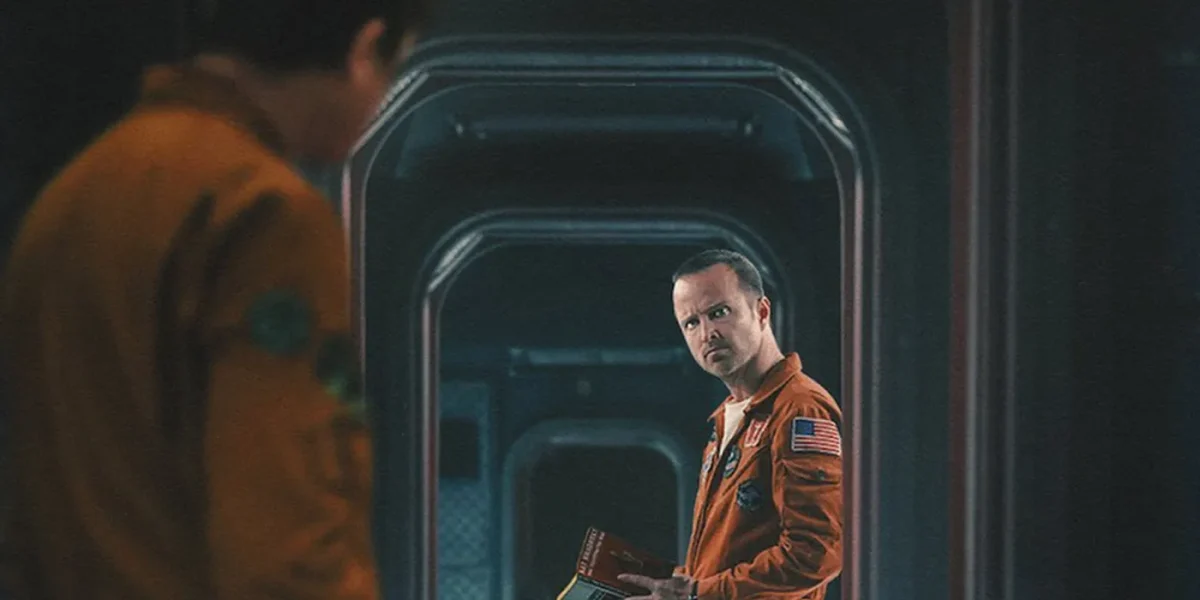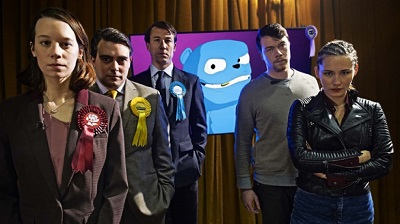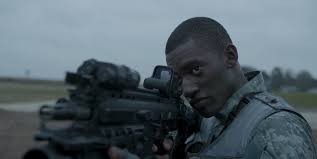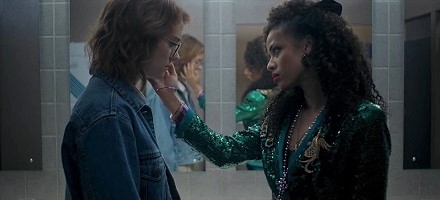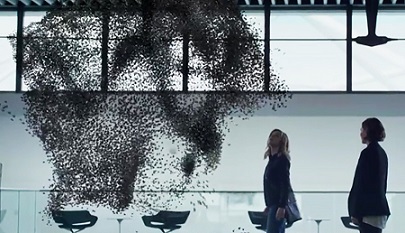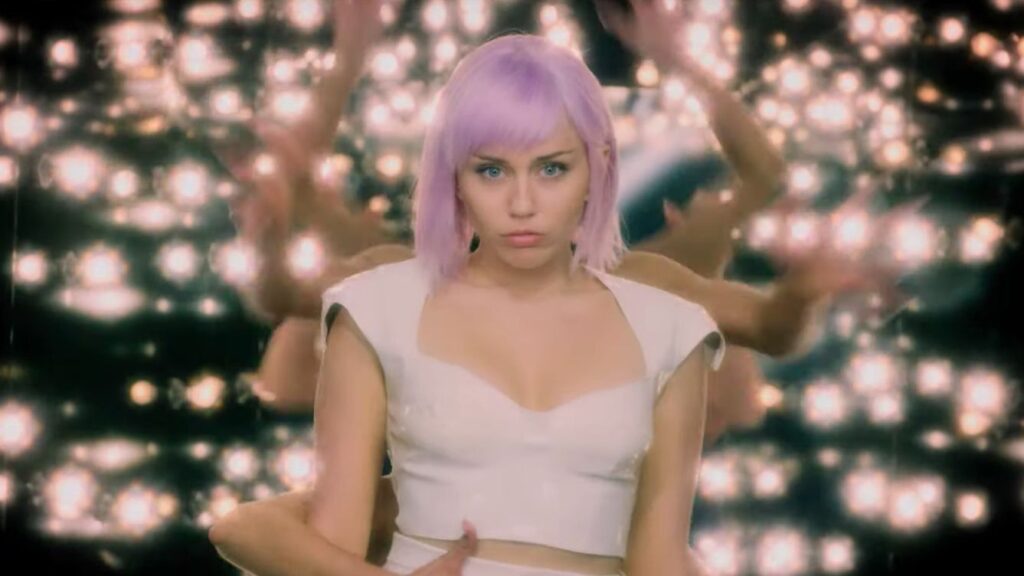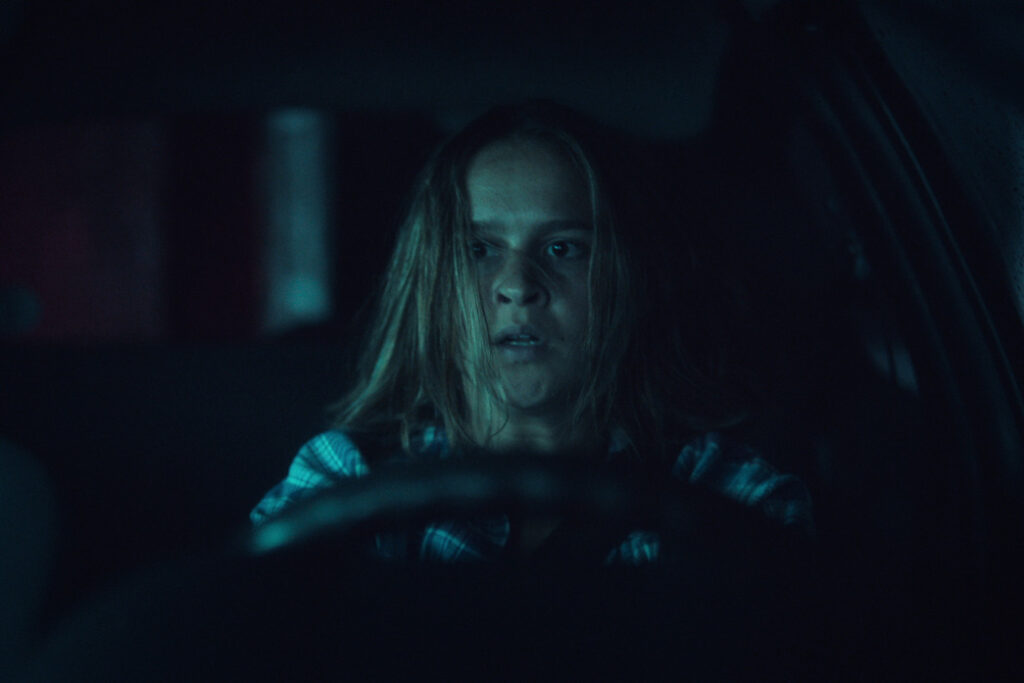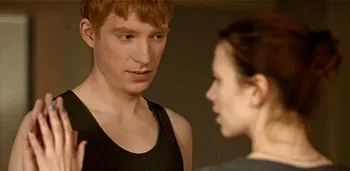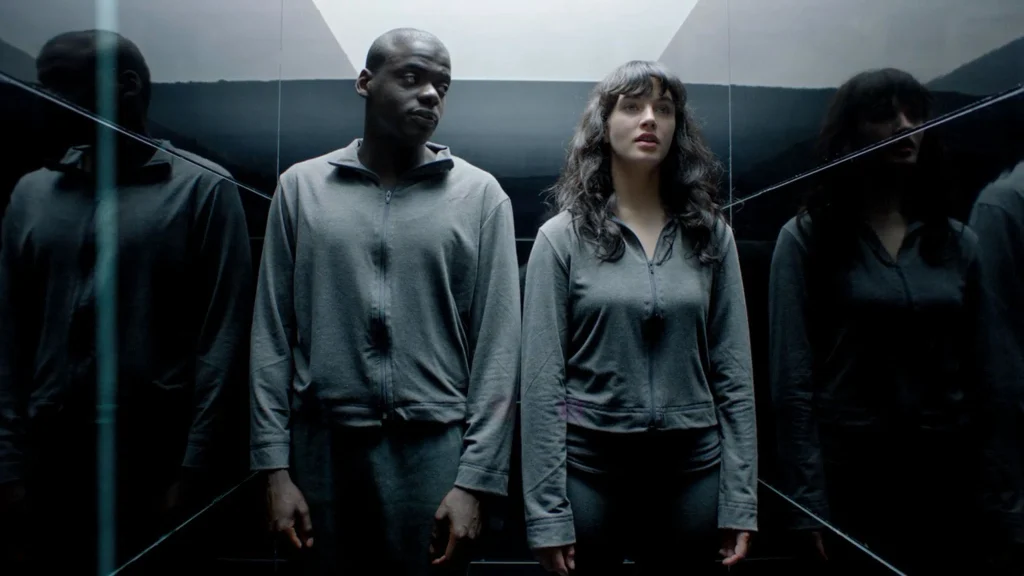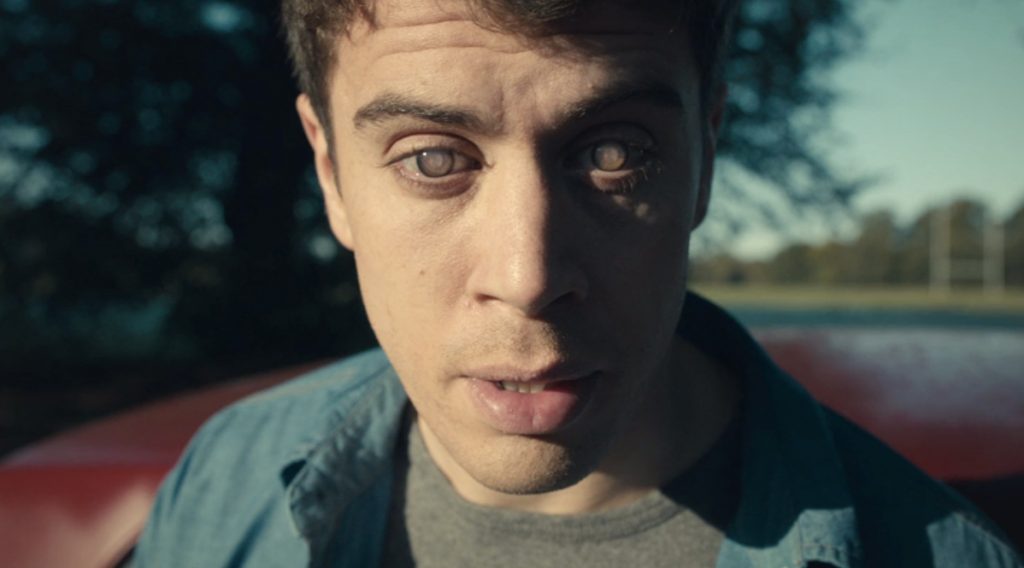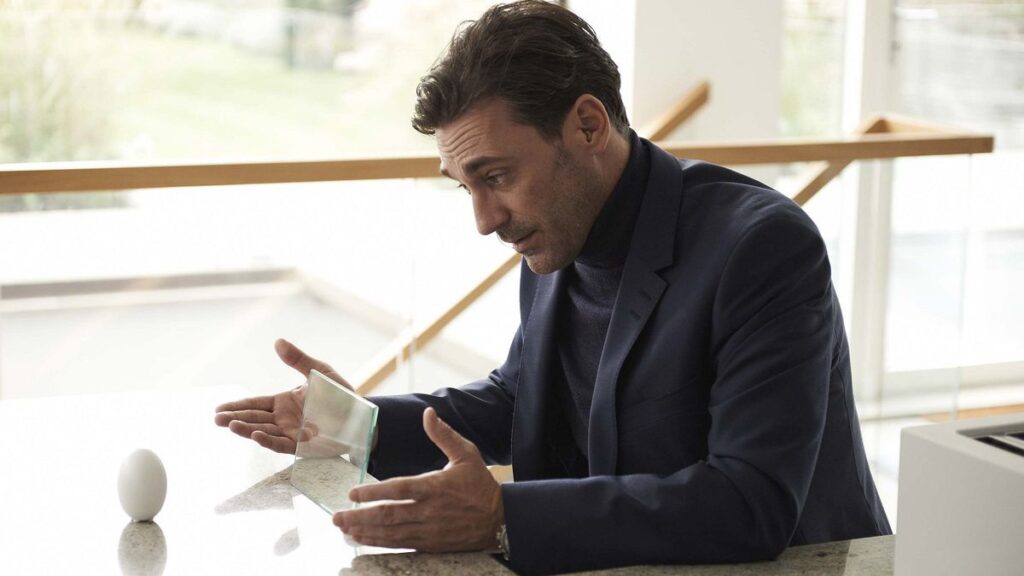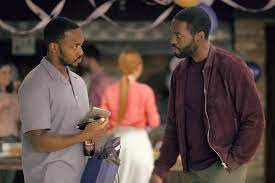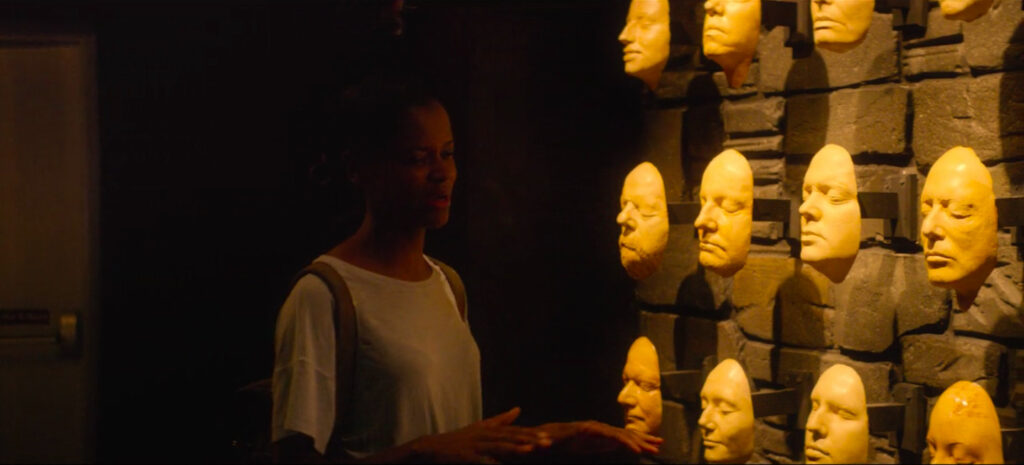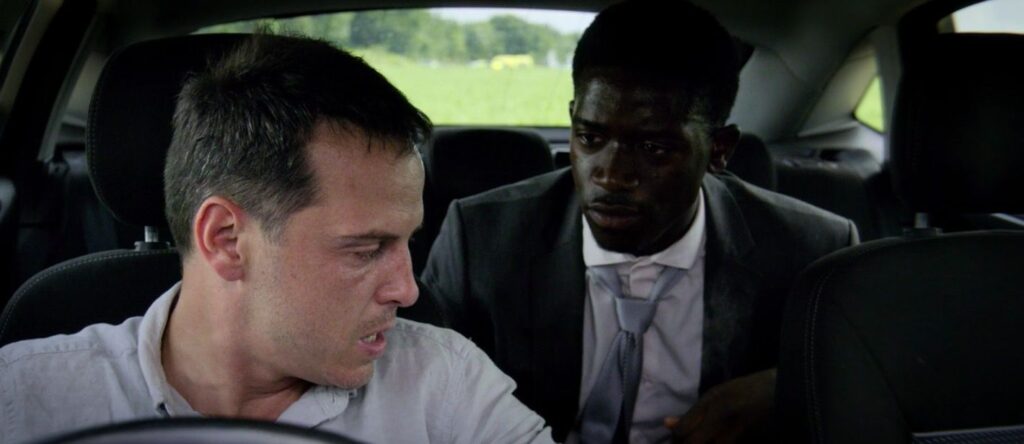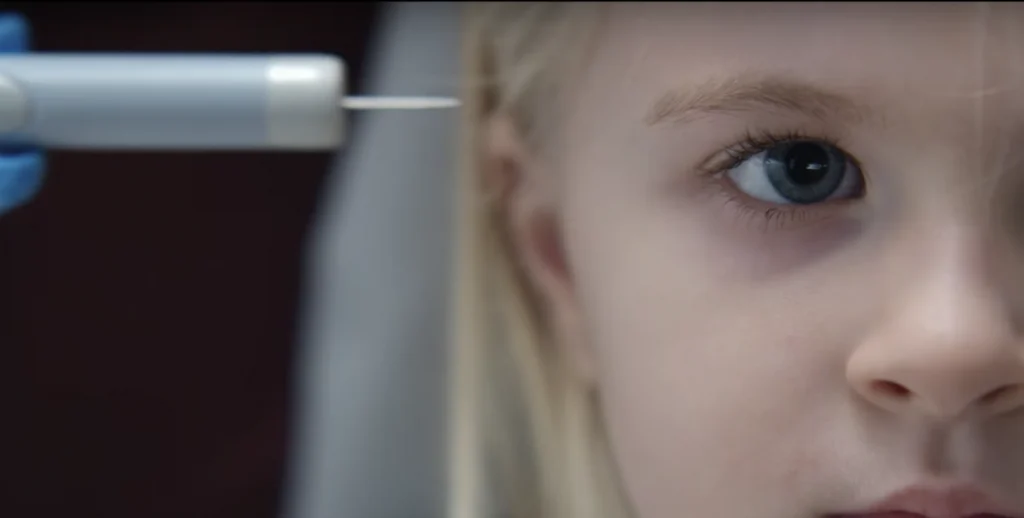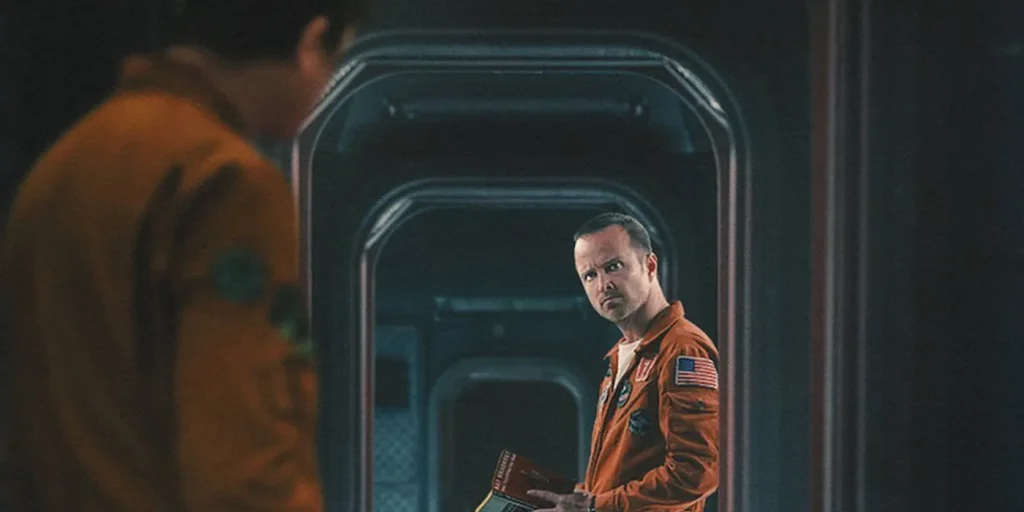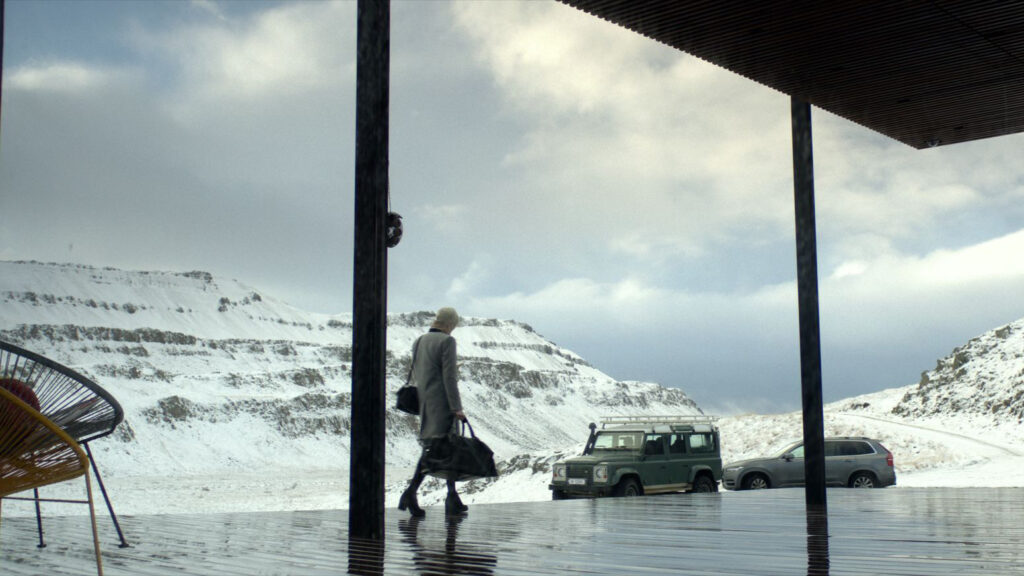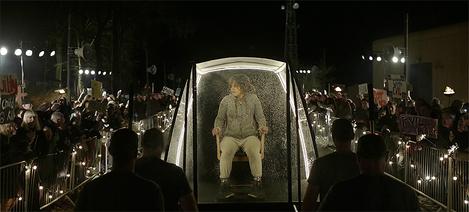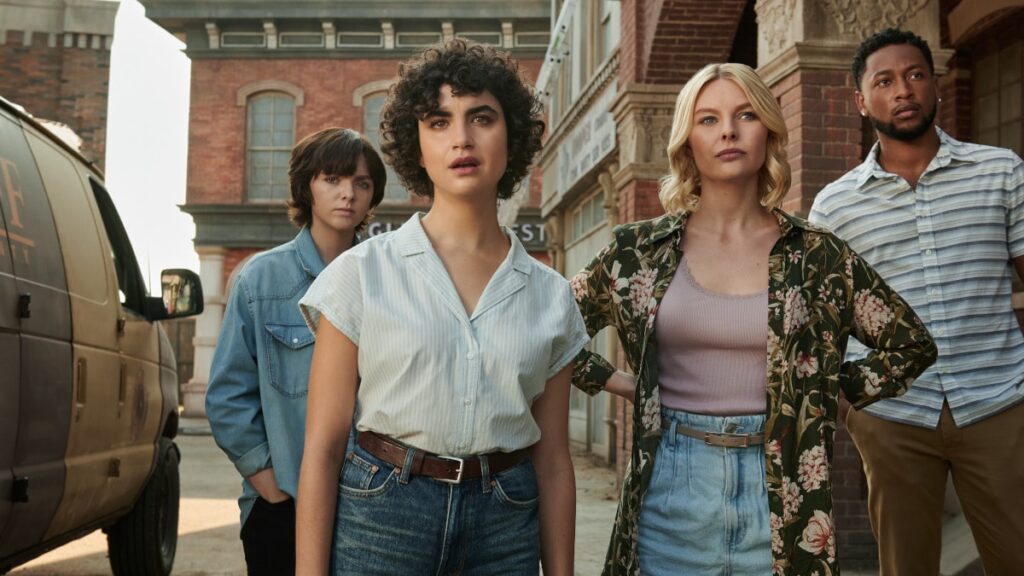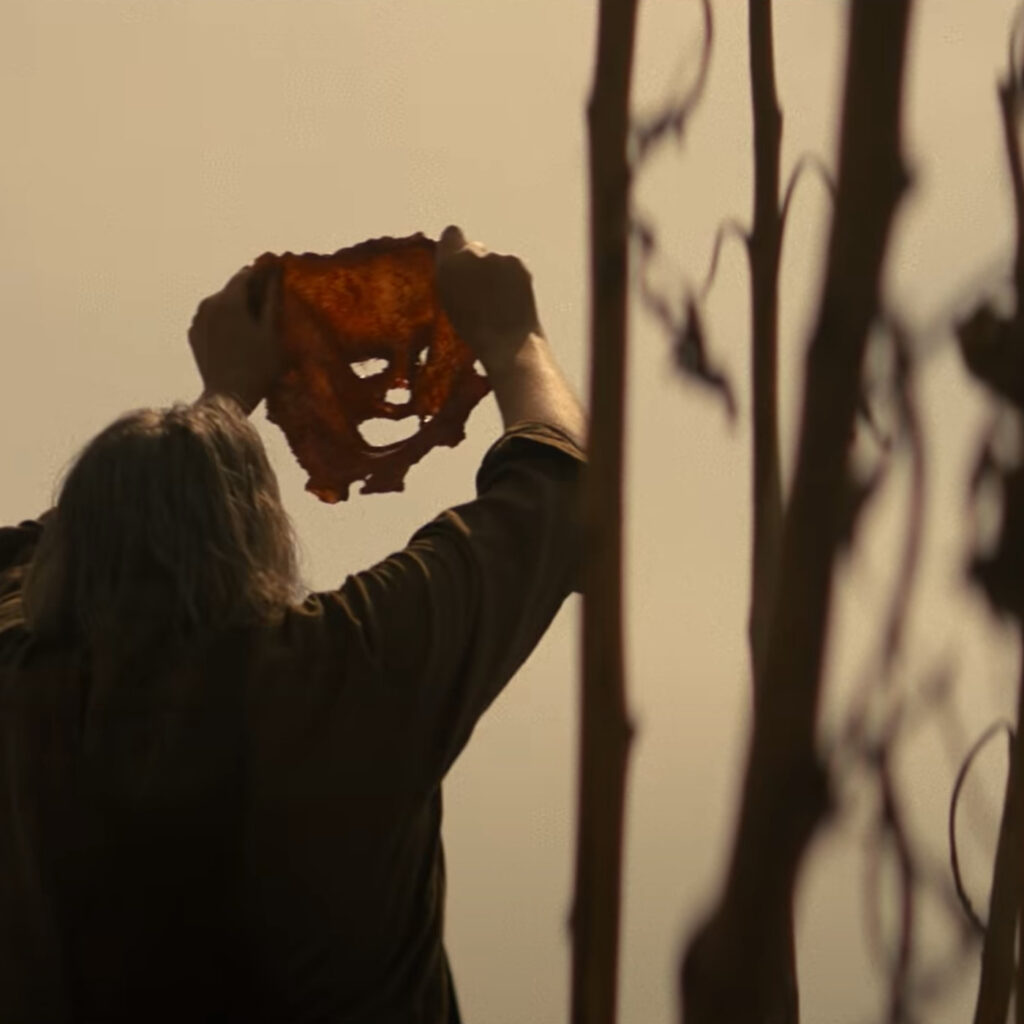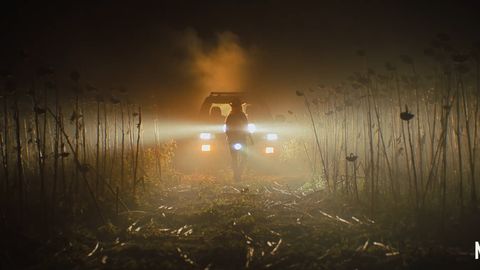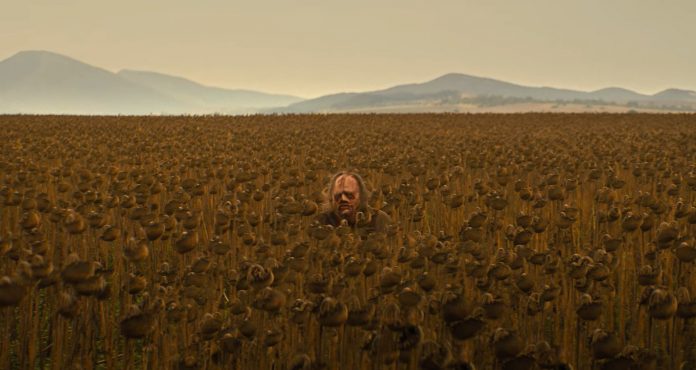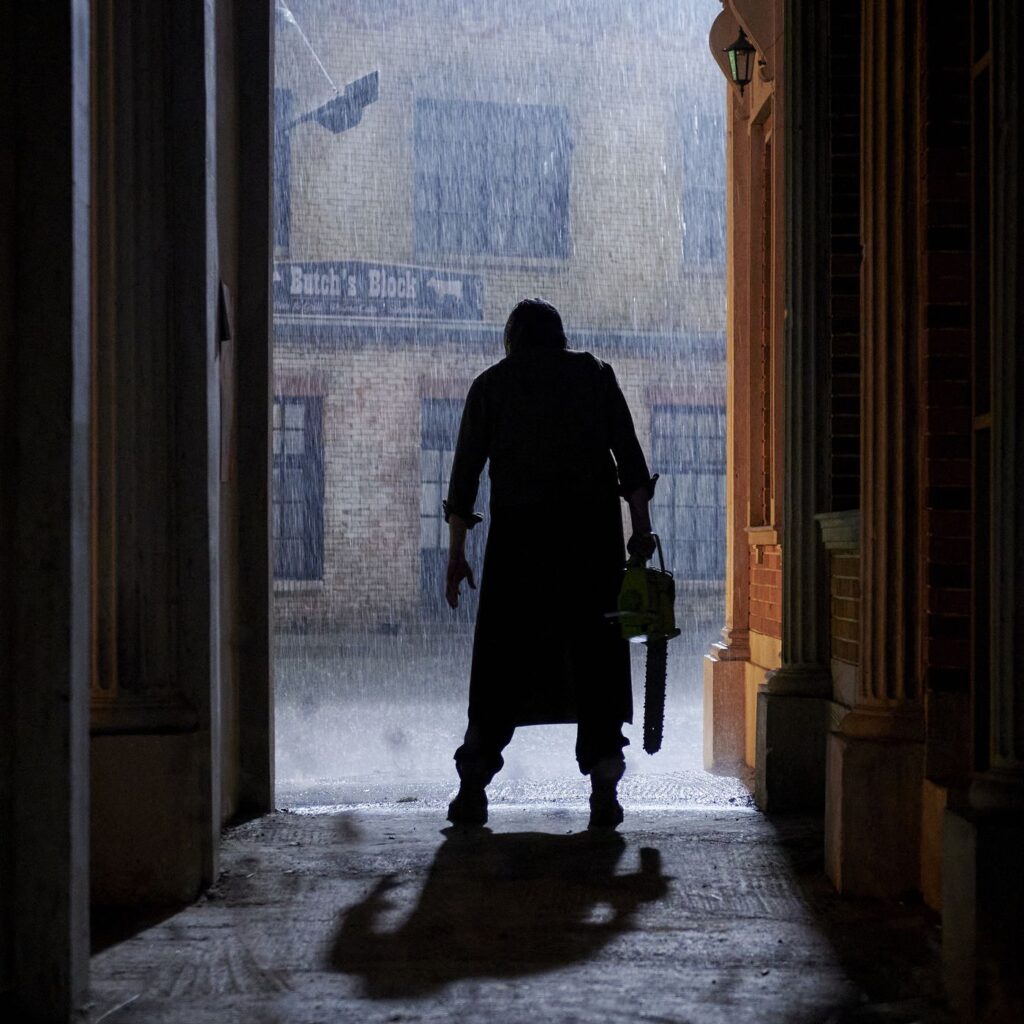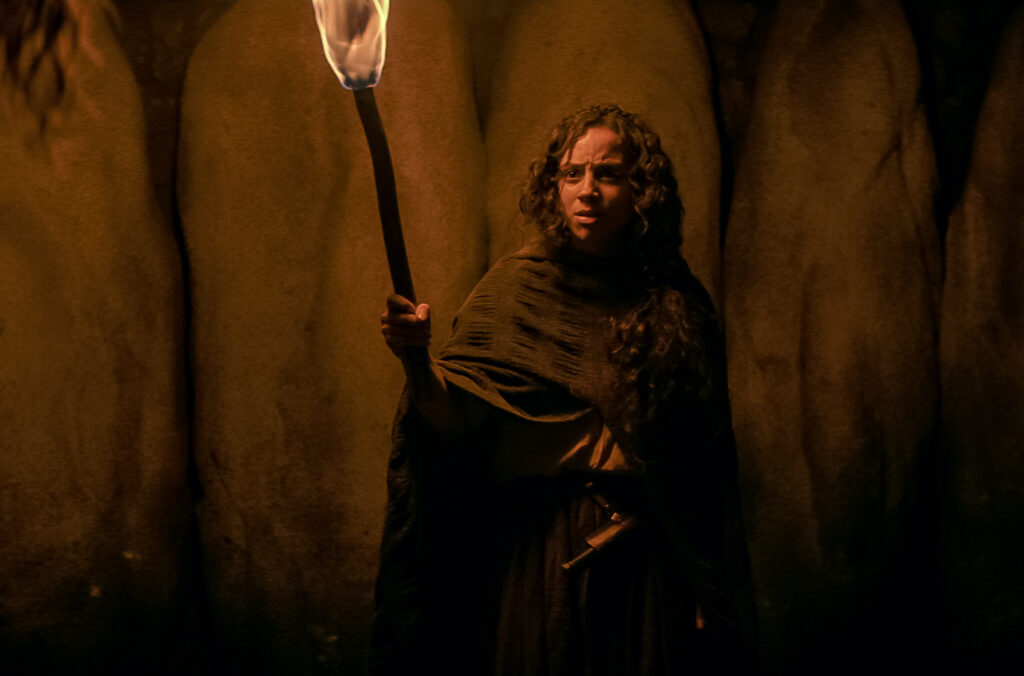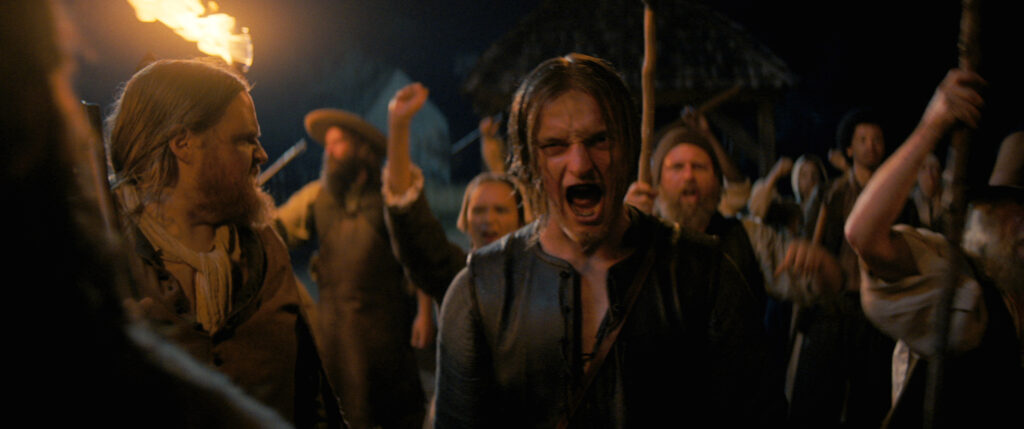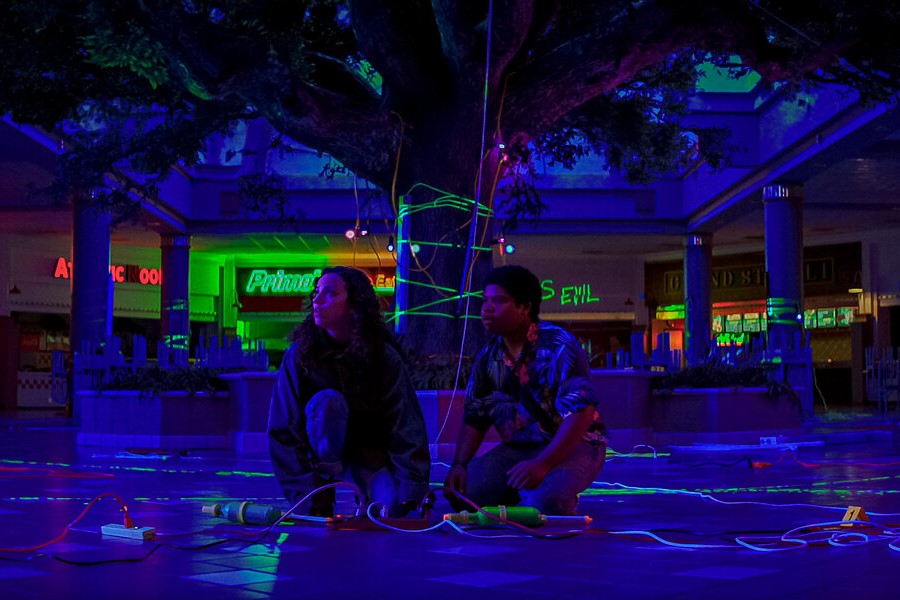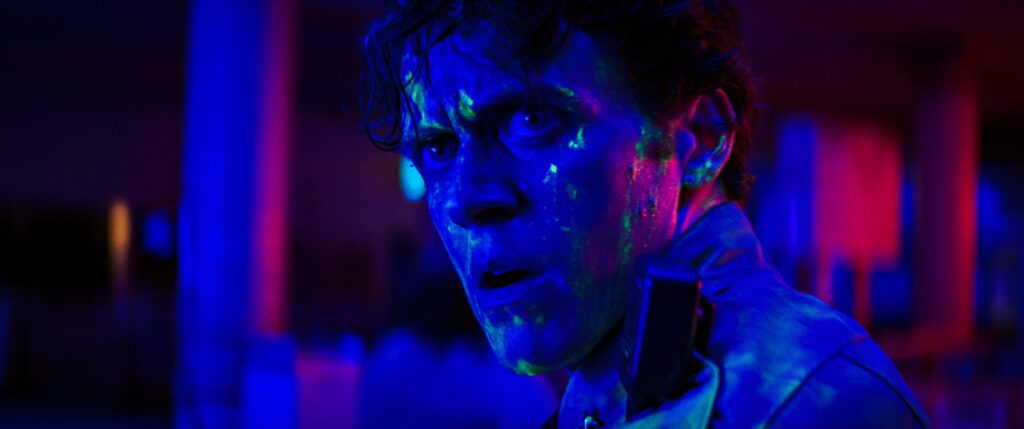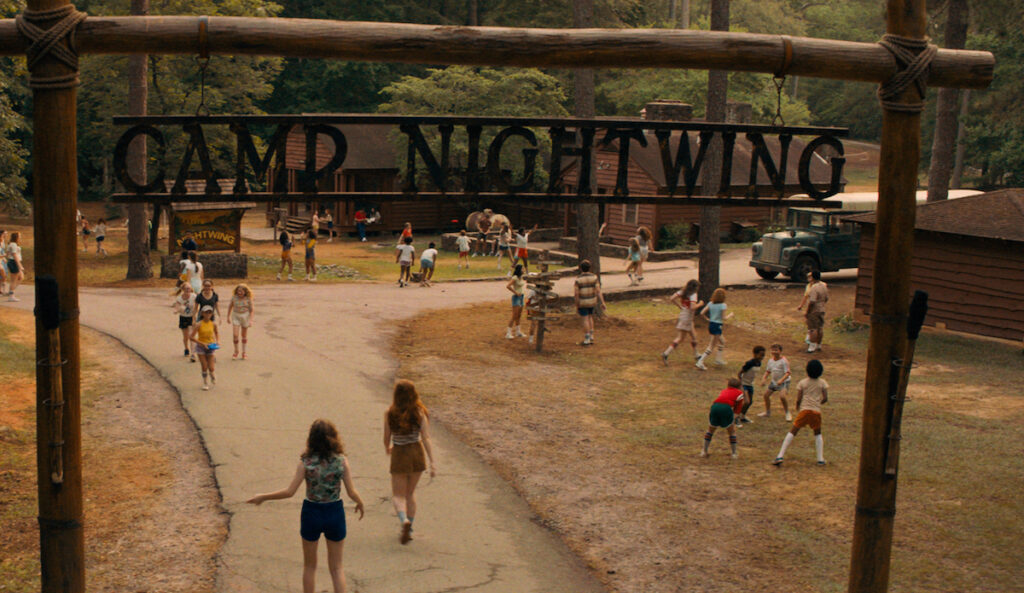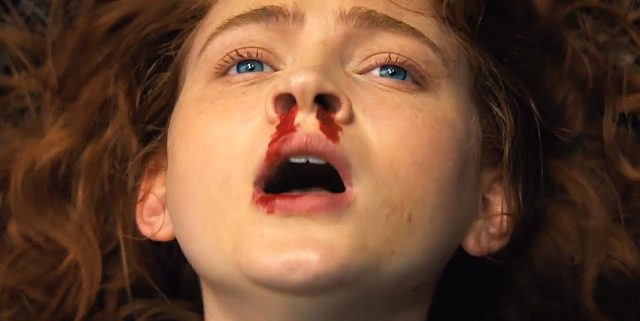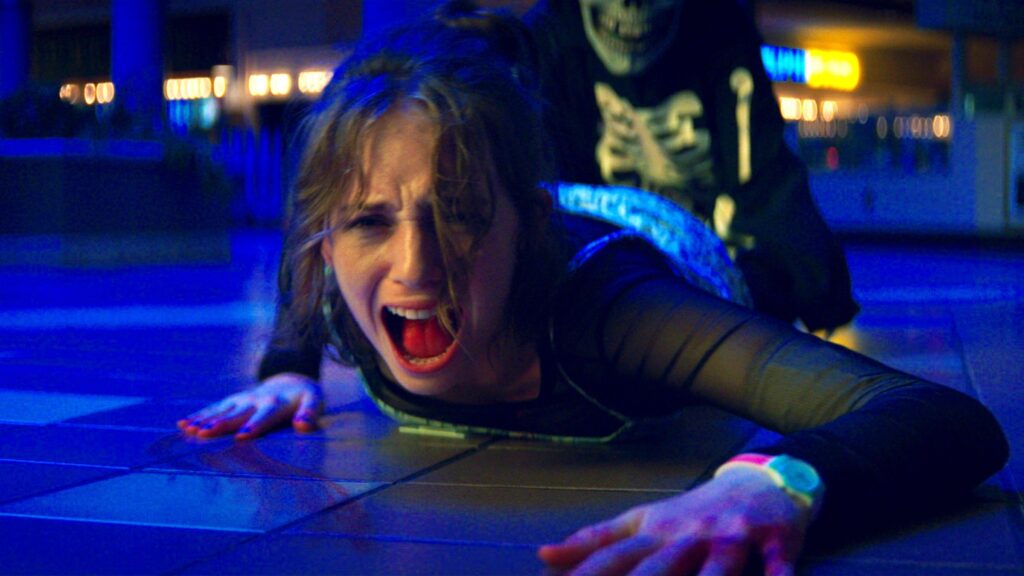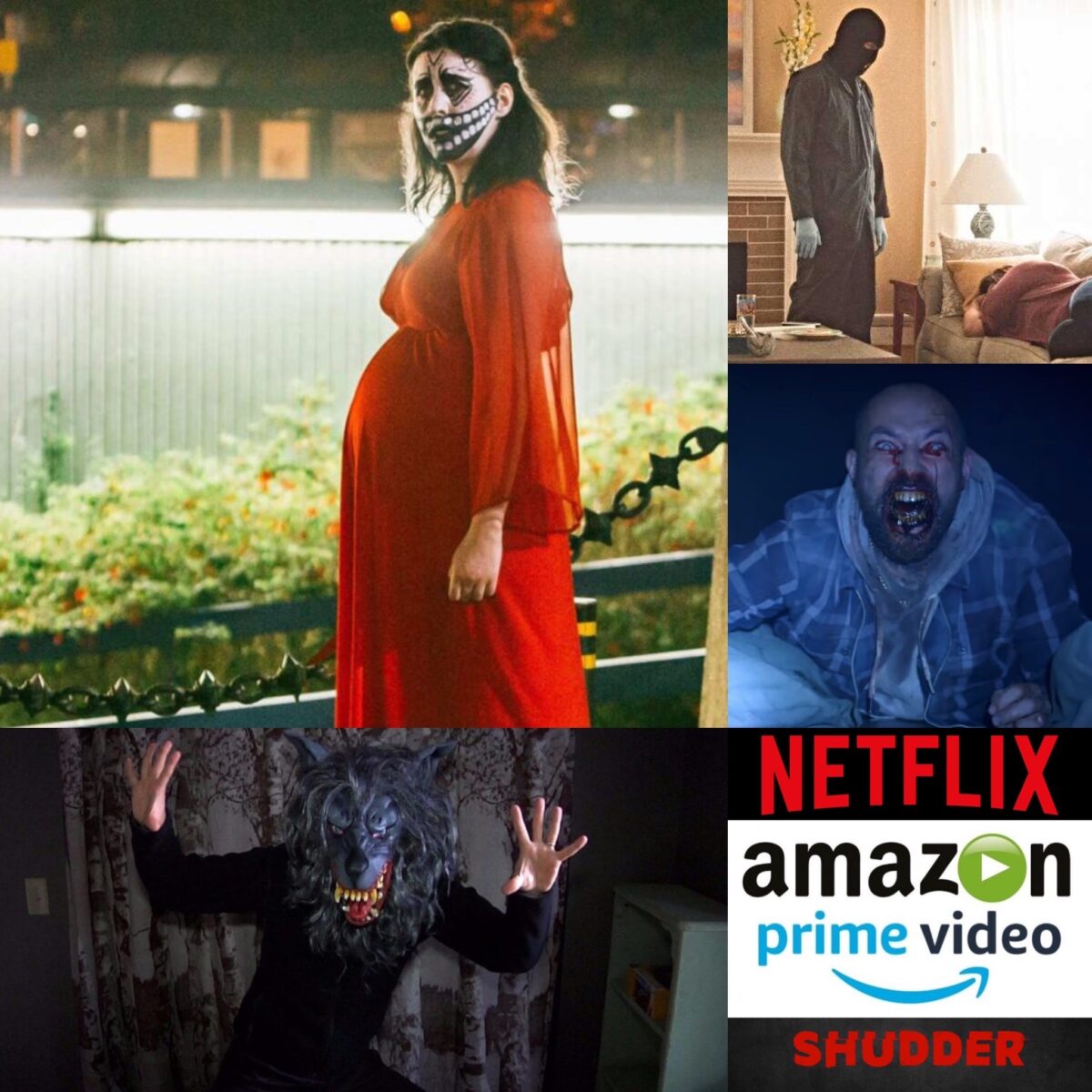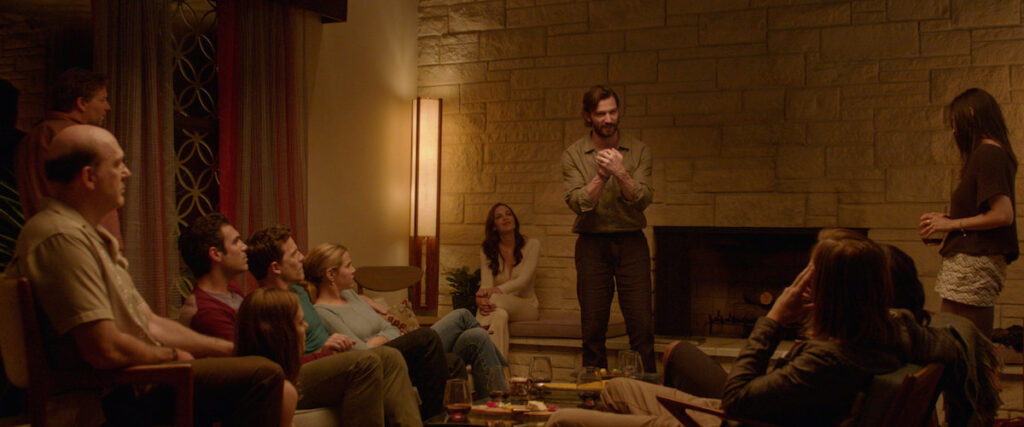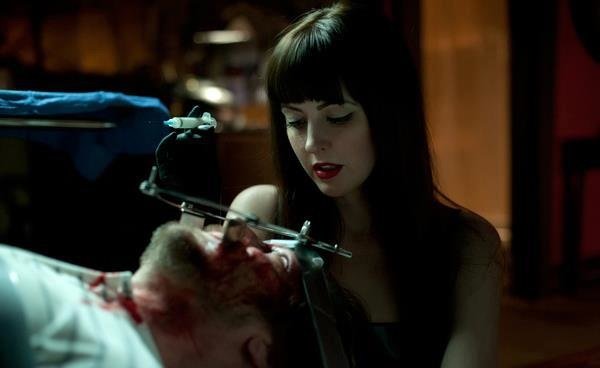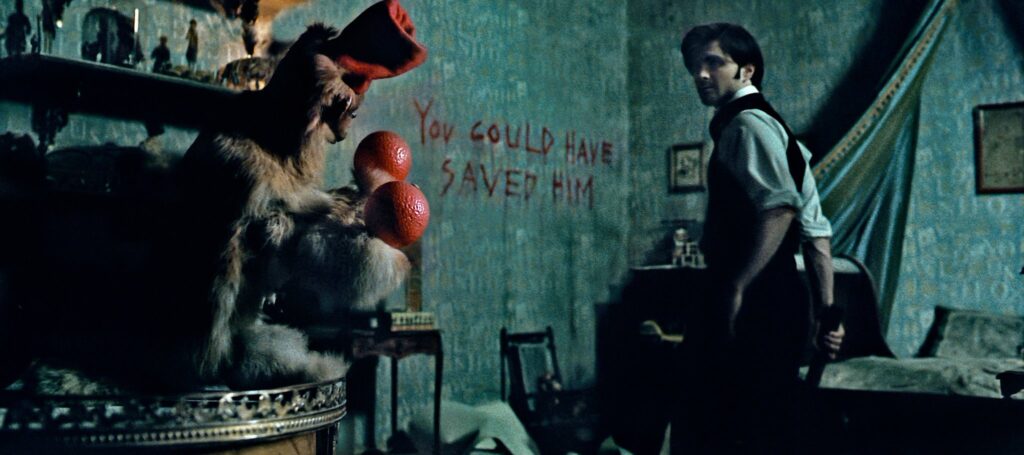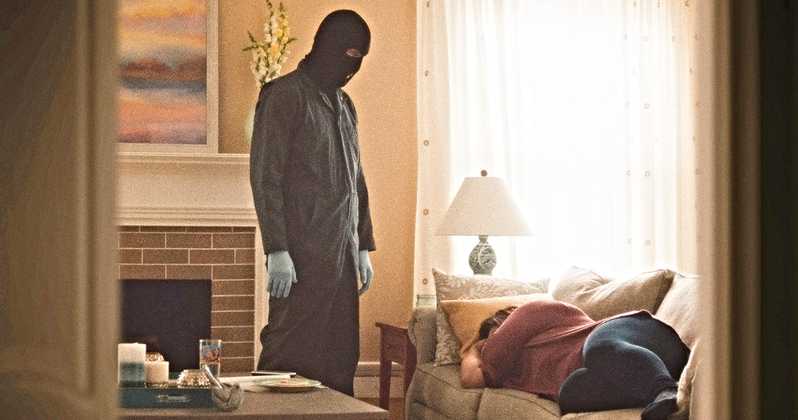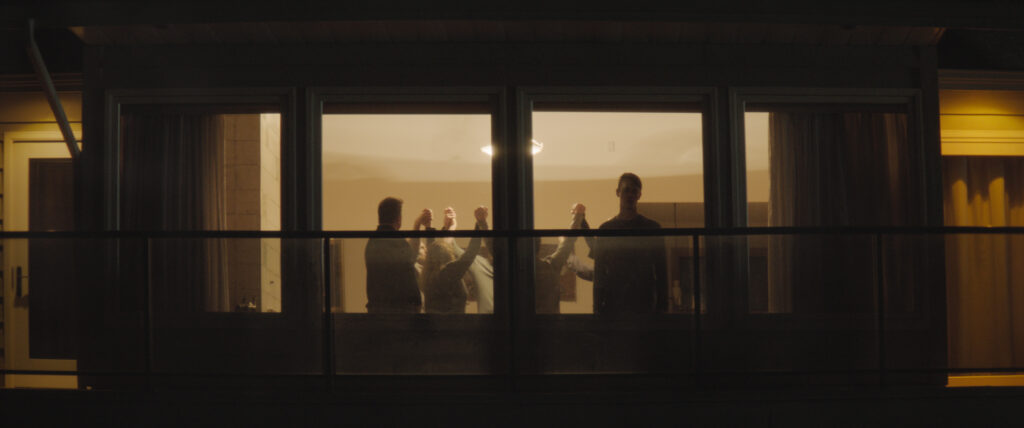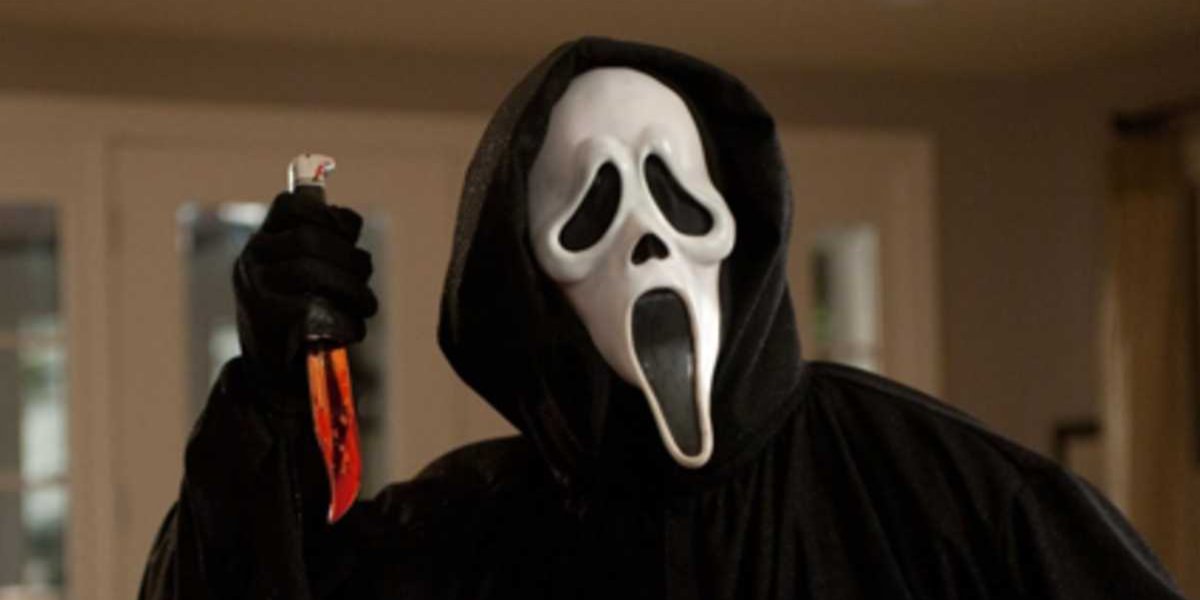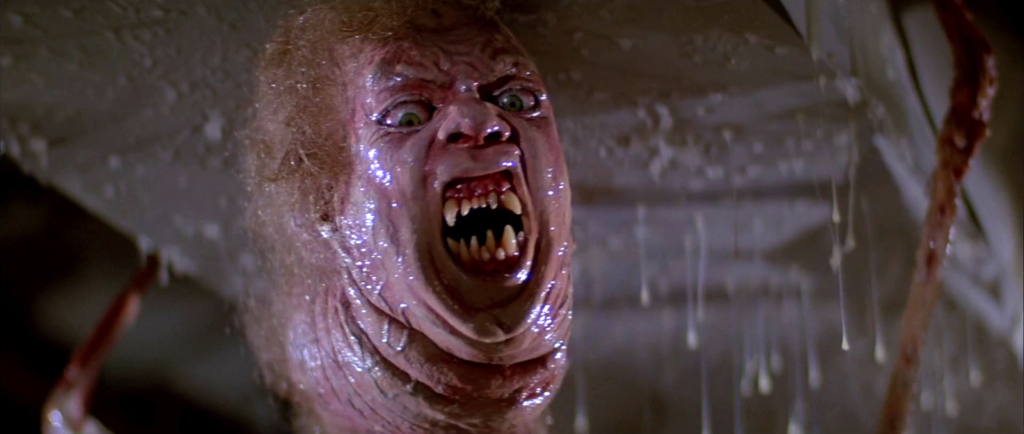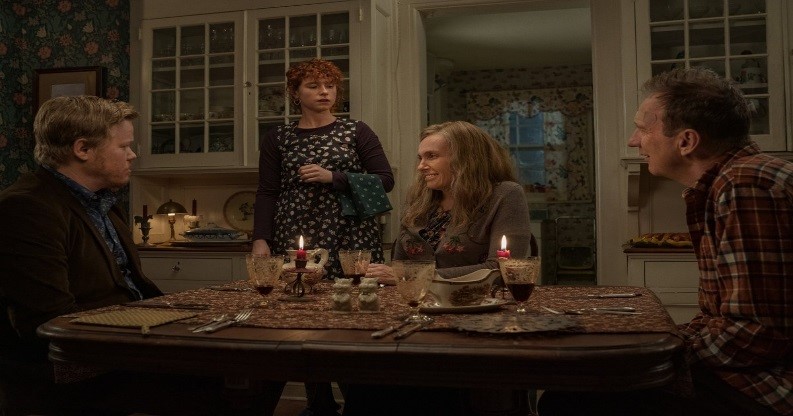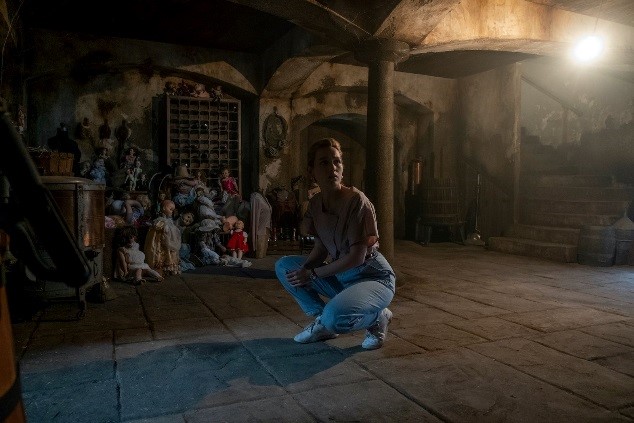
The Gorge (Directed by Scott Derrickson) – Apple TV+
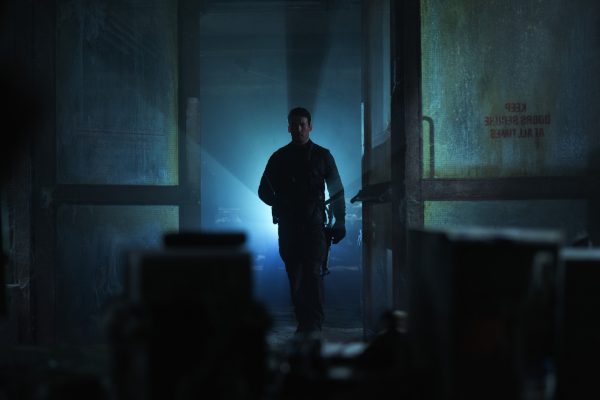
Horror director, Scott Derrickson (“The Exorcism of Emily Rose” [2005], “Sinister” [2012] “The Black Phone” [2021]), turns to the sci-fi genre with The Gorge, a straight to Apple TV+ production starring Miles Teller and Anya Taylor-Joy. The film follows two highly skilled snipers who are tasked with a mission to watch over and guard with their lives, a seemingly bottomless gorge. Although the assignment is shrouded in mystery, they soon discover what unearthly secret dwells in the pit. The Gorge is booming with high-impact, exhilarating twists and turns, with the action factor being pumped up throughout the entire film, yet there is also a unique tenderness played out by Teller and Taylor-Joy. As such, the film becomes this unmissable, multidimensional piece that is a standout release in Apple’s streaming catalogue.
Severance – season 2 (Directed by Ben Stiller) – Apple TV+
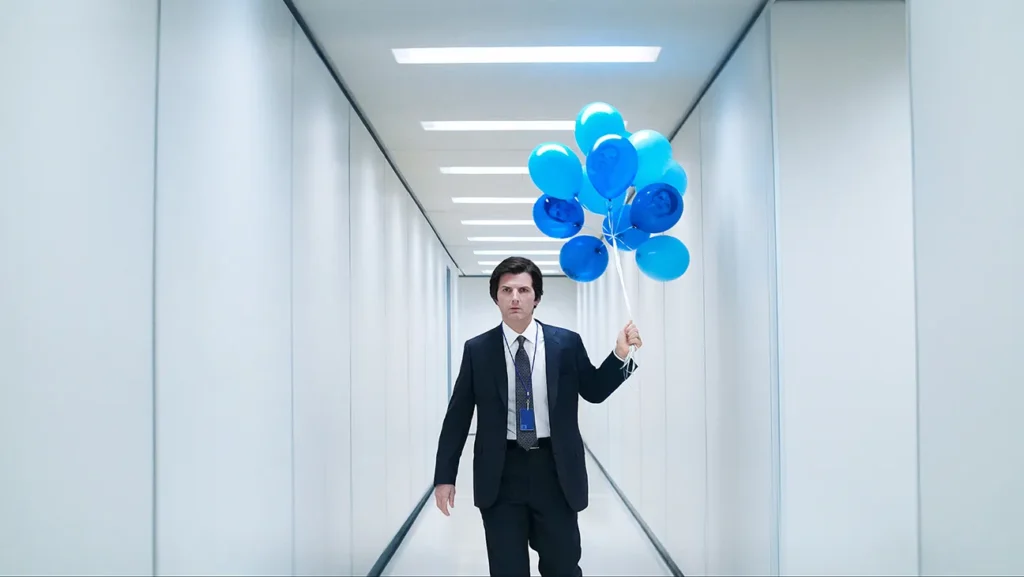
The widely acclaimed and Emmy nominated dystopian thriller meets psychological horror hybrid, Severance, is back for a second season. Taking place in an atmospherically uncanny office, Severance follows a unit of office employees who have undergone a company-warranted surgery where their memories have been altered to not remember their working days whilst off the clock, and to not recall their personal lives when on duty. The recently premiered second season manages to be as surreally creepy as its first, with the storylines initiated from the previous episodes becoming even darker and more entrenched in that terrifying, yet monotonous aura that was established in the very first episode.
Rumours (Directed by Evan Johnson, Galen Johnson, Guy Maddin) – Paramount Plus
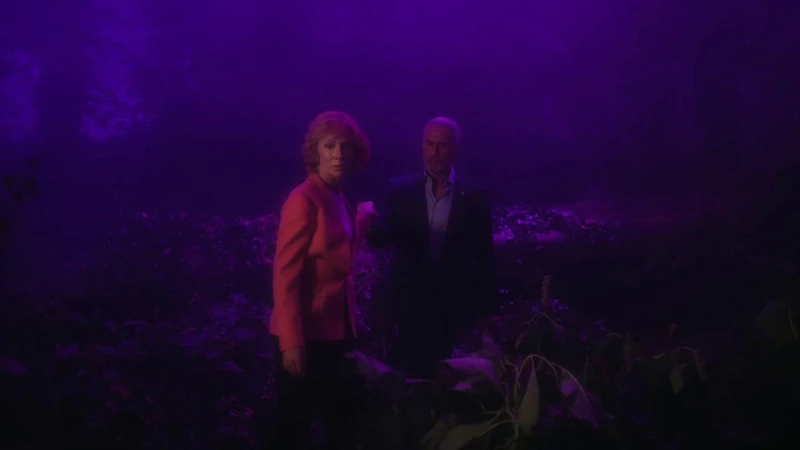
Working on the same level as satirical, but also all too real films such as “The Belko Experiment” (2016) and “The Hunt” (2020) is Rumours, now streaming on Paramount Plus. Rumours sees a cast of some of the most wealthy democracies become lost in the forest as they draft a joint statement on a major crisis. Rumours thrives on its own sporadic story where satire and black comedy meet with peculiar, erratic, creature horror to create a film that can be described as a viewing experience, rather than just a quick watch. The eclectic storyline is made all the more appealing thanks to the ensemble cast which includes, Cate Blanchett, Roy Dupuis, Denis Ménochet, Charles Dance, Nikki Amuka-Bird and Alicia Vikander.
Control Freak (Directed by Shal Ngo) – Disney+
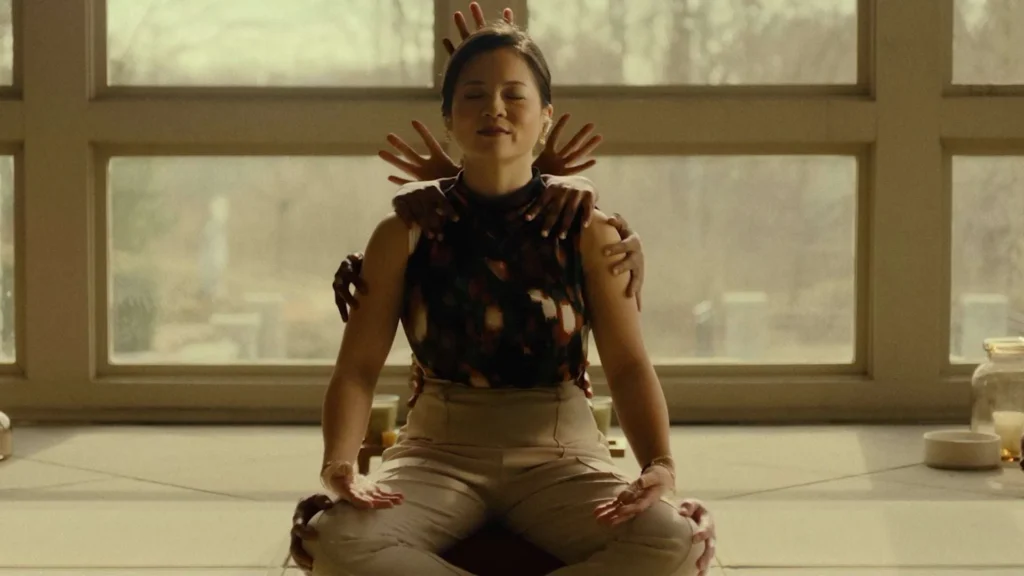
The itchingly affective horror Control Freak might have only just premiered on Disney+, yet this monstrous feat already has viewers itching. Control Freak follows Val (Kelly Marie Tran), a very successful and high-achieving motivational speaker who begins experiencing an uncomfortable itch on her head that soon takes control over her entire being. Creepy crawlies, body trauma and anxiety-inducing scenes all take centre stage in this so gross, yet oh-so-moorish series.
Alien: Romulus (Directed by Fede Álvarez) – Disney+

When it is announced that a major franchise is receiving a ninth release, it can be easy for eyes to roll, with audiences often craving new, original storylines. However, Alien: Romulus’ effective, truly nerve-gripping sci-fi feature was a sure-fire crowd-pleaser from day one. Originally released in cinemas last year, the latest Alien film has finally been released on Disney’s streaming platform for all to witness this intense fight for survival.
Nightbitch (Directed by Marielle Heller) – Disney+
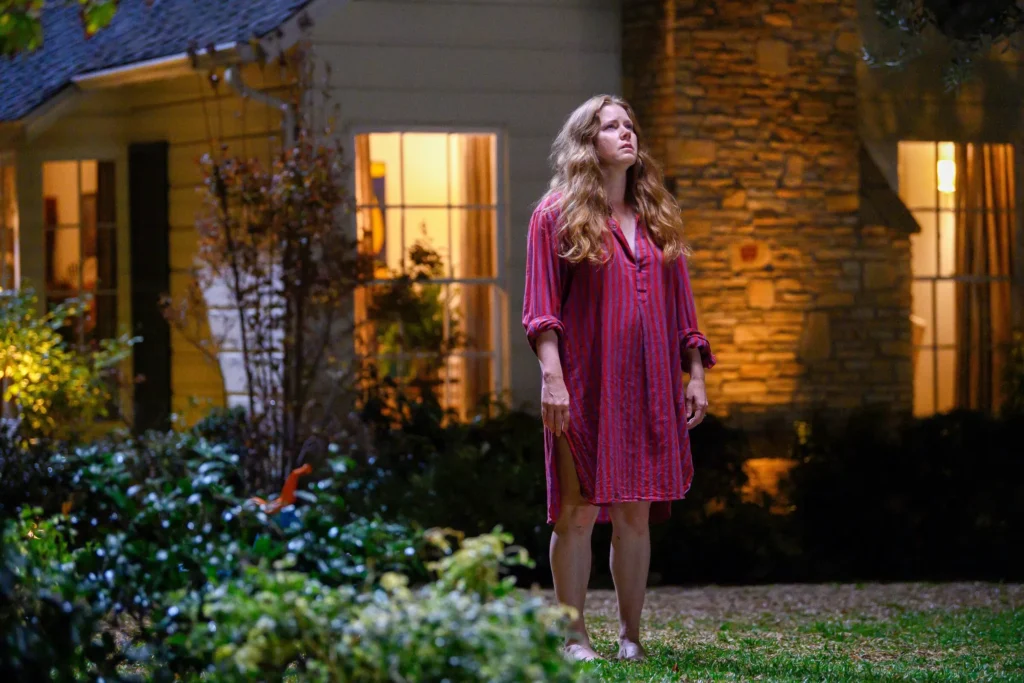
Based on Rachel Yodder’s 2021 novel of the same name is Marielle Heller’s Nightbitch, a gutsy horror following a stay-at-home mother (Amy Adams), who is becoming increasingly frustrated at her life as she waits at home all day maintaining the idyllic housewife lifestyle; however, all of her frustrations take a turn for the worse as she begins to experience a feral, canine transformation. Adams gives an ambitious performance that helps to align the entire character-study element of the film, in turn providing an abundant amount of tension and ferocity to every inch of this monstrous and complex horror.
The Calendar Killer (Directed by Adolfo J. Kolmerer) – Prime Video
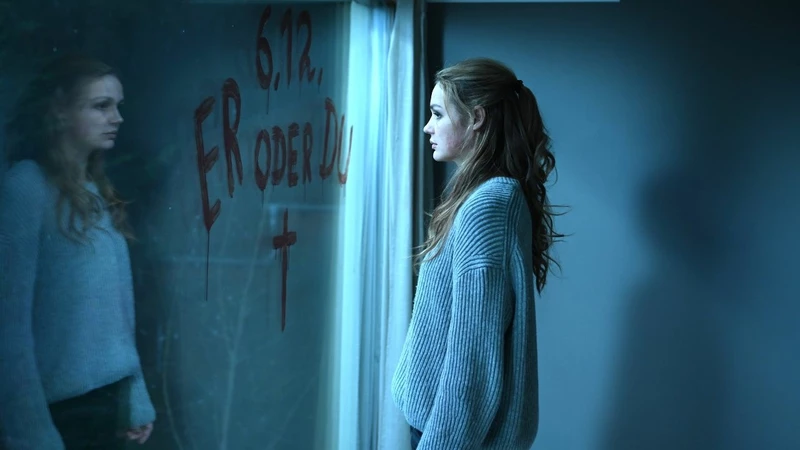
This German horror follows Klara (Luise Heyer), a woman who has been given an ultimatum by The infamous ‘The Calendar Killer’: murder her husband or die. Terrified, Klara calls an emergency helpline, reaching Jules (Sabin Tambrea), together they must do the impossible and get to the bottom of the case before it is too late. The Calendar Killer has all the tools for a stellar, gripping ride of pure intensity, with the film being highly dramatic, rich in its storytelling techniques and aesthetically thrilling. Although this horror has seen a steady rise on the streaming charts, this film is still highly underrated and certainly unmissable.
Little Bites (Directed by Spider One) – Shudder

This gruesome horror from the mind of Spider One, the brother of Rob Zombie, sees a family tormented by a sinister, gory demon. Little Bites plays with impactful family dynamics, with the narrative showcasing complex facets such as generational trauma within the ties that bind us. Whilst the film demonstrates such matters with impressive value, where the film shines the most is in the practical effects, with Little Bites creature design being seriously effective throughout.
Humanist Vampire Seeking Consenting Suicidal Person (Directed by Ariana Louis-Seize) – Shudder
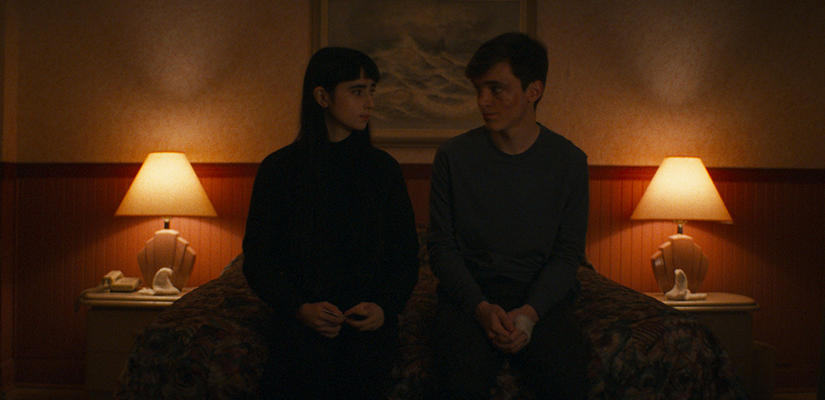
The brilliantly titled Humanist Vampire Seeking Consenting Suicidal Person, follows Sasha (Sara Montpetit), a sensitive vampire who after a traumatic childhood incident, sees killing for feed as inhumane. Although years have passed, Sasha remains appalled with the concept of vampirism until she meets Paul (Felix-Antoine Benard), a suicidal young man. With similar strains of humour to the likes of “What We Do in the Shadows” (2014) and “When the Screaming Starts” (2021) is Humanist Vampire’s sense of quirky, dark comedy where the surrealist quality of the cinematic events sparks an outlandish, yet delightfully funny tone.
Delicious (Directed by Nele Mueller-Stöfen) – Netflix
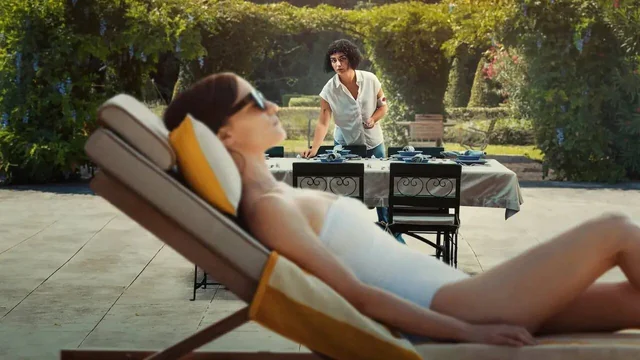
Since its premiere on Netflix early this March, Delicious has garnered quite a contentious reception, with audiences either loving the satirical, ill-natured horror or strongly disliking this take on the ‘eat the rich’ genre of cinema. Either way, Delicious is quickly catching attention. No matter which side is taken, Delicious is extremely well filmed, with the film’s atmosphere being increasingly sinister with each scene, alongside the brilliant cinematography that captures the stark social divide that the film aims to tackle.
Demon City (Directed by Seiji Tanaka) – Netflix
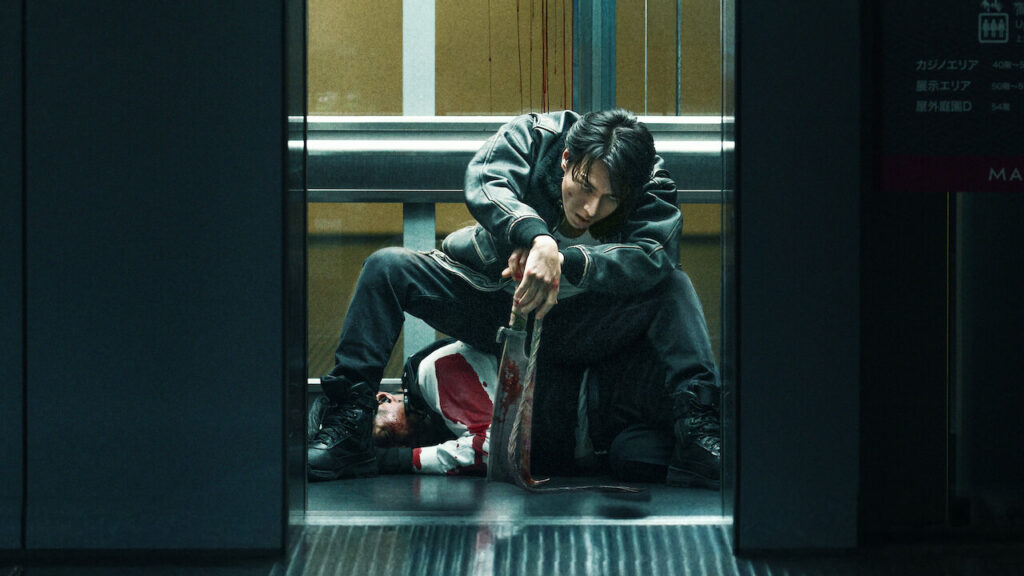
Based on the Oni Horoshi (2020-2024) comics is Demon City, a Japanese dark thriller following a hitman who is on a path of vengeance after demon-masked killers murder his family and frame the unforgivable crime on him. The revenge element combined with the moody lighting and melancholic, almost gothic feel will remind viewers of “The Crow” (1994), but with an even bloodier and callous punch of violence as this merciless thriller refuses to mellow.
The Line (Directed by Ethan Berger) – Now TV/Sky Cinema

For many of us overseas, the fraternity culture of American colleges is only something that has been captured on screen. However, Ethan Berger’s The Line rips away any cinematic divide as this first-time feature director fully immerses the viewer in the chaotic and devastating world of collegiate organizations at their worst. The Line stars Alex Wolff as Tom, who is seduced by the lifestyle of the Kappa Nu Alpha (KNA) fraternity. The film takes on the bold subject with an air of rawness that puts on a show of how hazing rituals and masculinity exercises can be truly terrifying.
I Saw the TV Glow (Directed by Jane Schoenbrun) – Now TV/Sky Cinema
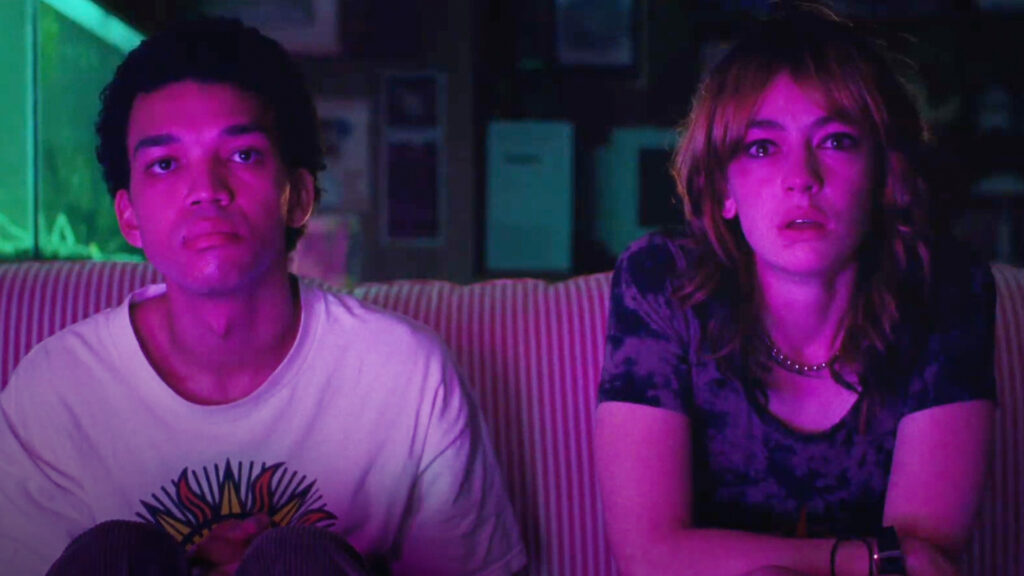
I Saw the TV Glow received tremendous acclaim upon its release, praised for its personal nature and haunting aura that hypnotises as much as it startles. The film follows shy teenager Owen (Justice Smith), who in 1996 meets the quiet and distant Maddy (Jack Haven), who introduces him to a TV show titled ‘The Pink Opaque’; together the pair become entranced by this mysterious show. I Saw the TV Glow follows their journey of obsession and delusion over the years as The Pink Opaque takes over their sense of being. Utterly enthralling and entirely bewitching, this horror will sink its teeth into you and not let go.
Get Away (Directed by Steffan Hars) – Now TV/Sky Cinema
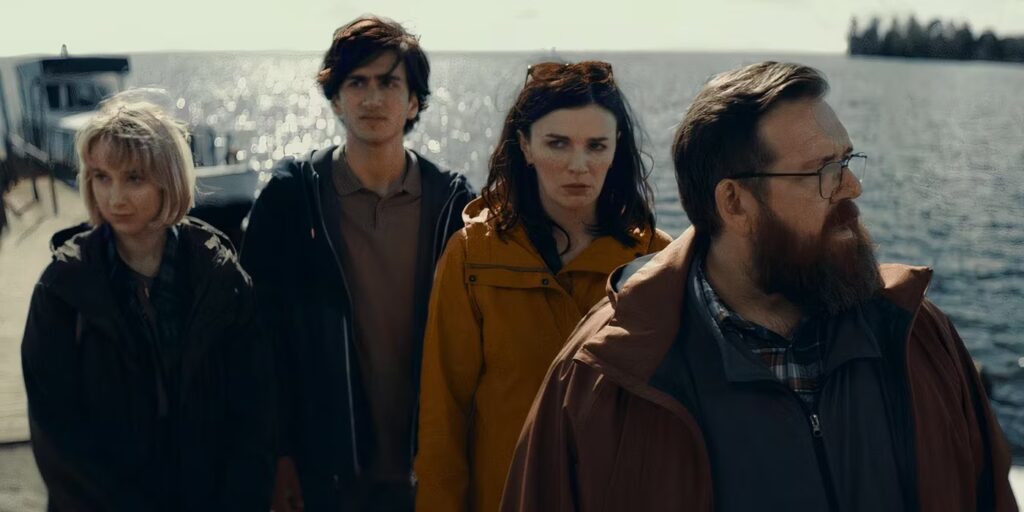
Nick Frost and Aisling Bea lead this hilarious and unexpectedly brutal horror, playing parents Richard and Susan as they take their two teenagers, Sam (Sebastian Croft) and Jessie (Maisie Ayres), on a family holiday to the Swedish island of Svalta. What begins as a quaint trip to the lakeside town ends up as an absolute bloodbath. The film excels at the hands of Frost and Bea’s incredible comedic timing, complete with realistic, hilarious dialogue that turns even the most mundane of moments into gory laugh-fests. The excellent script, also written by Frost, is not afraid to take a few grisly detours, with the film adding in just enough subplots to create an interesting buildup to the shocking third act.
Coming soon:
Happy Face (Created by Jennifer Cacicio) – Paramount Plus – 20th March
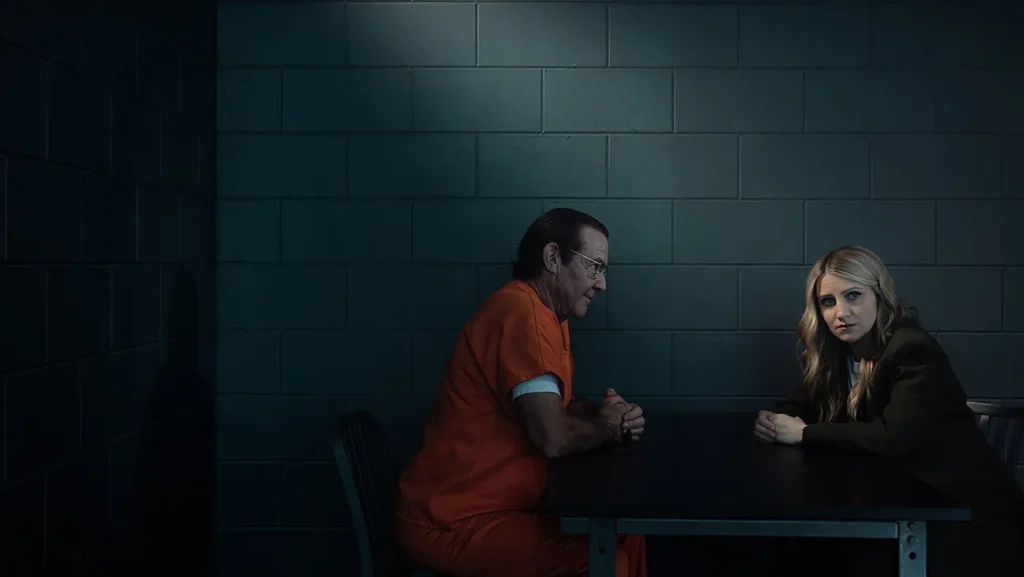
In March of 1995, Melissa G. Moore found out that her father, Keith Hunter Jesperson, was the ‘Happy Face Killer’, the previously unidentified serial killer who had murdered eight women, although the number is said to be in the hundreds. Moore’s brave resilience in speaking about the hidden signs and revelations of her father sparked books, Lifetime Movies, documentaries, podcasts and now a Paramount Plus produced TV series. Dennis Quaid plays the father/murderer, with Annaleigh Ashford starring as Moore. Although not yet released, the show has been met with critical praise, with reviews speaking of the film’s integrity to not create an idealised portrayal of a sensitive and true story, instead opting for an honest, necessarily brutal and authentic account of a horrific tragedy.
Holland (Directed by Mimi Cave) – Prime Video – 27th March

Nicole Kidman stars in this Mimi Cave directed psychological thriller which follows suburban mum, Nancy Vandergroot (Kidman), whose picture-perfect life comes shattering down when she and her friend Dave (Gael García Bernal) discover that a disturbing secret lies amongst them. From the released teasers and images, Holland is set to be just as devilish and dark as Cave’s previous feature “Fresh” (2022), with the film blending the juxtaposed worlds of quaintness and sickness together to create a layered mystery that gets more distressing each and every scene.
The Rule of Jenny Pen (Directed by James Ashcroft) – Shudder – 28th March

The Rule of Jenny Pen, based on Owen Marshall’s short story of the same name, follows former judge and now retiree, Stefan Mortensen (Geoffrey Rush) who finds himself in a care facility after becoming partially paralysed. Stefan’s dismay at the home is made all the more immediate by fellow tenant, Dave Crealy (John Lithgow), an elder man who is seemingly pleasant enough. However, Dave is a secret sadist who enjoys the torture of others, as he uses his glove therapy puppet, nicknamed Jenny Pen, to reign terror over the residents. The film is set to be a genuine fright, with the premise itself being enough to catalyse an array of doll-themed nightmares. If that wasn’t enough, the film is complete with the talents of Rush and Lithgow whose screentime amplifies the impact of this upcoming fright.
Want more top horror lists and reviews? Check out our blog here..

